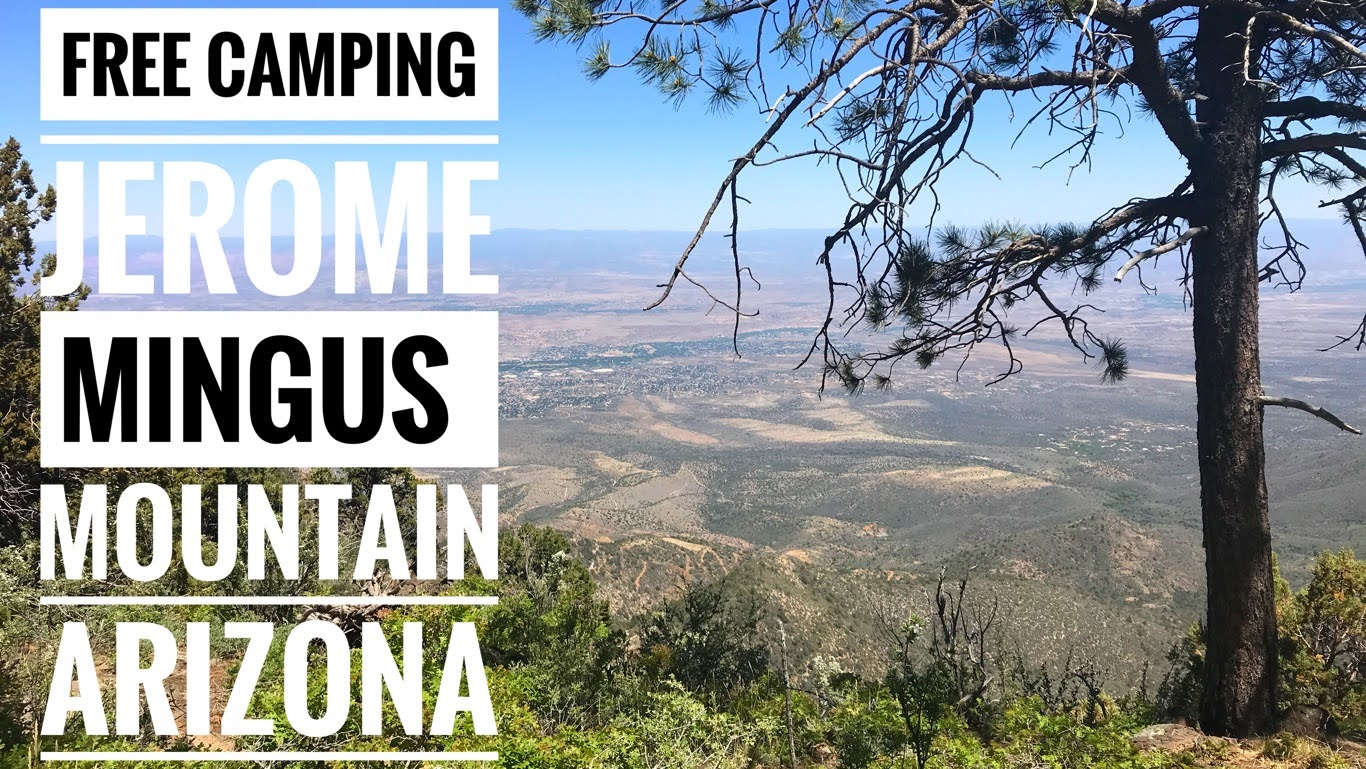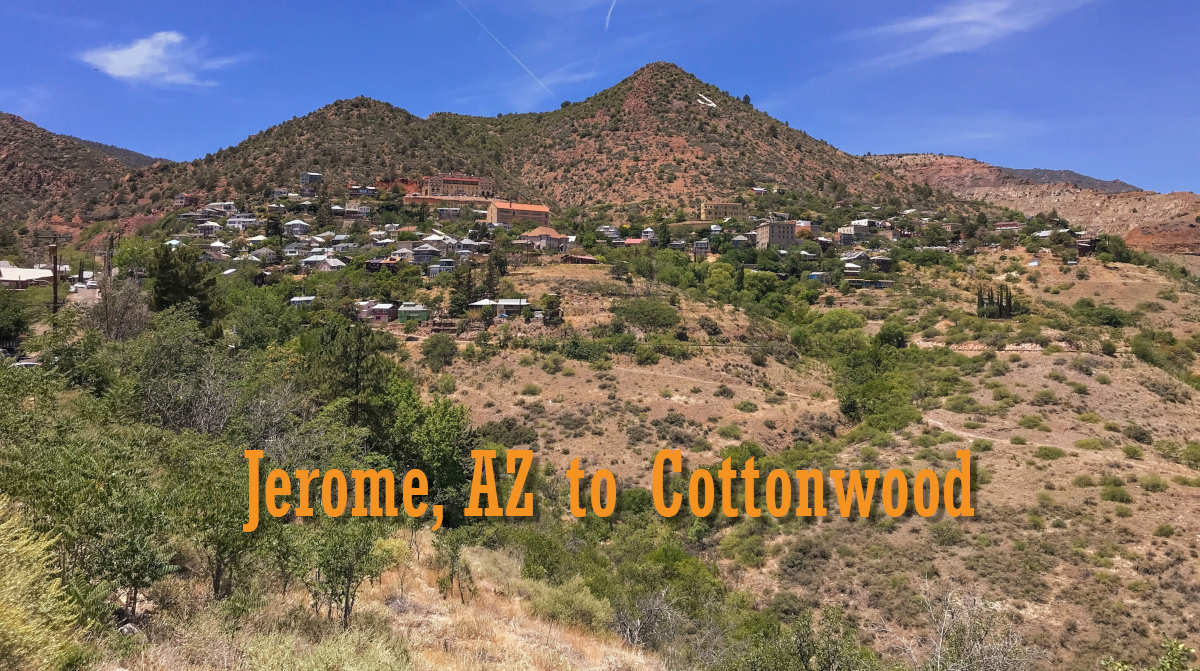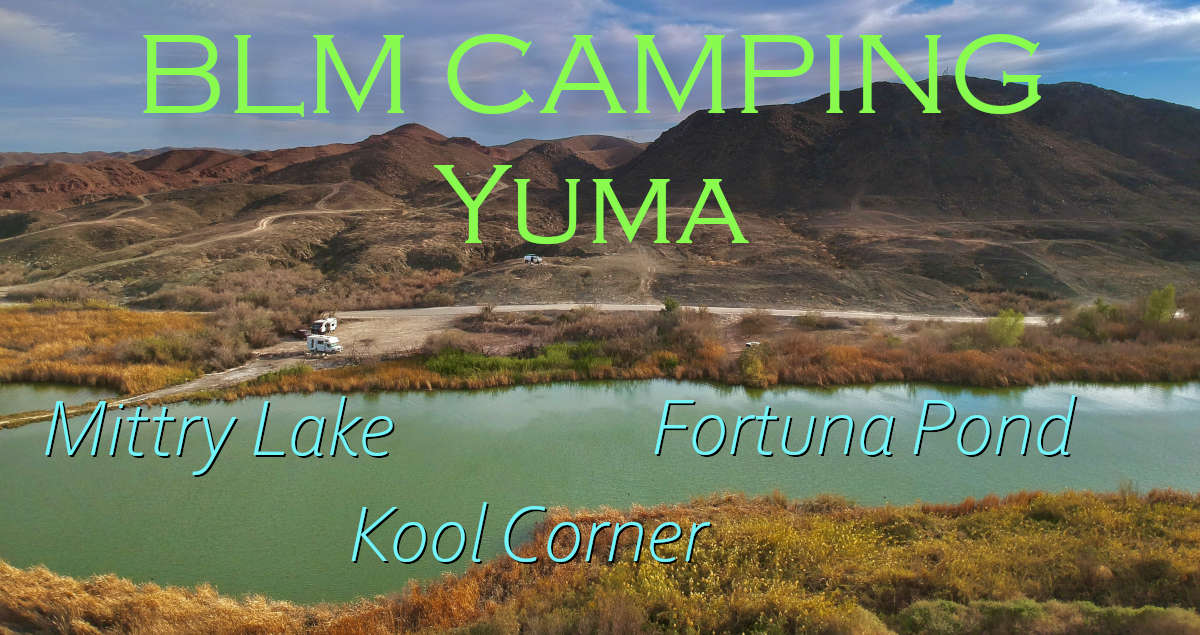A Guide for Saffordite Rock Hunters
Executive Summary — Where to Find Saffordite Rocks in Arizona
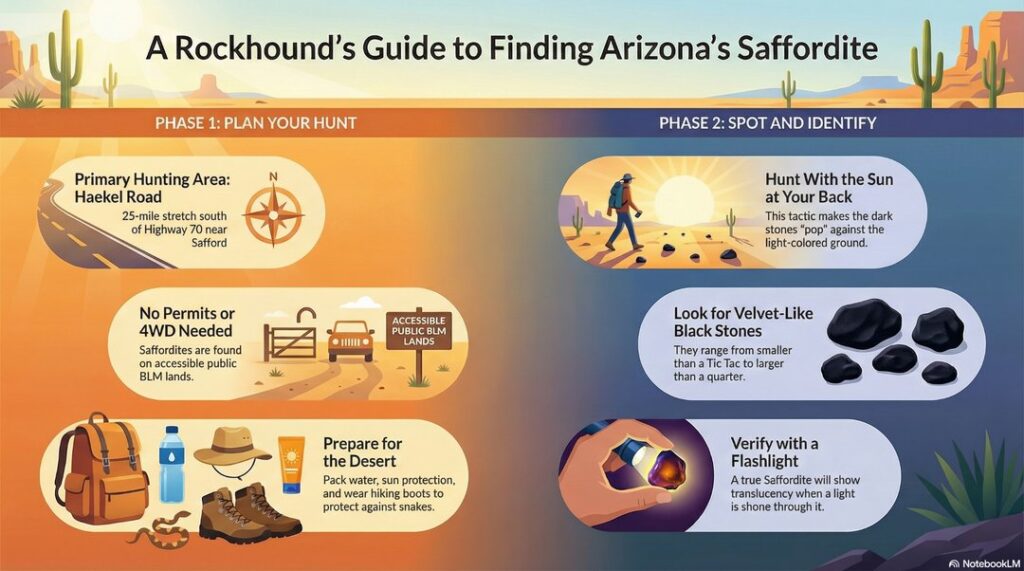
The article serves as a practical field guide for rockhounding enthusiasts interested in locating Saffordite — a rare black stone found in southeastern Arizona near the town of Safford. Saffordite is collected from public Bureau of Land Management (BLM) lands around the region, and no special permits, 4WD vehicle, or advanced tools are required to search for it.
Key Points Covered:
- Location & Access:
The most accessible hunting area is along Haekel Road, southeast of Safford. After traveling about seven miles east on Highway 70 from Safford, turn south onto Haekel Road and explore the surrounding desert on foot. Saffordites can be found anywhere along roughly 25 miles of this route. - Public Land Awareness:
Because the region includes both public and private lands, the guide stresses the importance of using interactive BLM maps ahead of time and being cautious to avoid trespassing. A visit to the local Safford BLM Field Office can help clarify land boundaries, though the article notes that office staff may not be especially knowledgeable about Saffordite specifically. - Preparation & Safety:
The desert environment can be harsh. The article provides practical advice on what to wear and pack for a successful outing — including water, sun protection, sturdy footwear, and tools to check stones’ translucency. Hazards like dehydration, sunburn, snakes, and terrain risks are highlighted. - Hunting Strategy:
Recommended tactics include walking away from the road in the morning and toward it in the afternoon so your shadow falls behind you, making the dark stones easier to spot. The stones vary in size from tiny pieces to larger specimens over a quarter in size. - Identification Tips:
Saffordites stand out against the light desert ground due to their dark, velvet-like appearance. A flashlight can help verify translucency, which distinguishes true Saffordite from other black rocks. Persistence is emphasized — beginners may not find any stones on their first try.
Saffordites are rare stones found only near Safford in Southeast Arizona, and in this guide, we tell you how and where to find them!
You do not need special tools, a 4WD vehicle, or a permit! Come prepared to spend a few hours in the hot (or cold) Arizona desert, and you will be rewarded with a handful of these very handsome little stones!
If you cannot visit Safford, please look at the Saffordite rocks in our online store. Every stone in our inventory was found by us on public land as described here.
About the Public Lands near Safford, AZ
Saffordites are found in a large area surrounding Safford, not just in one spot. As a result, we caution you to be aware of your location at all times and to avoid accidental trespassing.
Fortunately, there are huge pockets of public lands near Safford, managed by the Bureau of Land Management (BLM), that are available for Saffordite hunting. We recommend you study the BLM maps before arriving in Safford and visit the BLM office to learn more about the restrictions, rules, and land boundaries.
Online Map
Online, look at the interactive map – BLM Interactive Recreational– and zoom in on the Safford area. BLM land is shown in yellow.

Safford BLM Field Office
711 14th Ave. Safford, AZ 85546
You can buy paper maps for a small fee. The office staff is not a good source of Saffordite information – in our experience, it is not worth asking!
Maps and Directions
We highly recommend the Avenza Maps App!
Unfortunately, there are no maps for this area, and we suggest you use this article for directions.
The most accessible Saffordite area is southeast of Safford along Haekel Road. From Safford, travel seven miles east on Highway 70. Turn right (south) on BLM’s Haekel Road and proceed towards the Hot Well Dunes Recreation Area. Saffordites can be found anywhere along this 25-mile stretch of paved road!
What to Wear and Pack
Hunting for Saffordites is addictive, and you may stay out longer than expected! Please come prepared for many hours in the harsh Arizona desert!
While walking, keep your eyes on the ground and listen for unusual sounds. Rattlesnakes are active from late March until November. Tap your hiking pole on the ground, be careful where you step, and look around before sitting down or picking up stones. Use your pole and not your hands around vegetation and large rocks.
The main things to worry about are dehydration, sunburn, rattlesnakes, cuts, bruises, and ankle strains. We take the following in a daypack:
- Water and electrolyte drinks
- Sugar snacks for quick energy
- Bandana (wet to cool down your head)
- Pepper Spray (for unwelcome humans)
- Sunblock
- Poncho (in case of sudden rain)
- Tweezers and a needle (to remove thorns)
- Bandaid (for bleeding cuts)
- Phone charging stick and cable
- Pouch (to store the stones)
- Strong flashlight (to check if a stone is translucent)
- Eye drops if your eyes are sensitive to wind and dust
We dress in layers to combat the heat and wear baggy long pants to deflect possible snake bites.
- Sunglasses (optional, the stones may be harder to spot)
- Wide sun hat with a neck flap
- Baggy pants – jeans are good
- Hiking pole
- Hiking boots with ankle protection. Running shoes do not protect against snake bites.
- Thick socks to prevent blisters
Our Recommended Hunting Area
For your first outing, park anywhere within 15 miles after starting on Haekel Road. You can park along any of the unpaved maintenance roads, but do not block them.
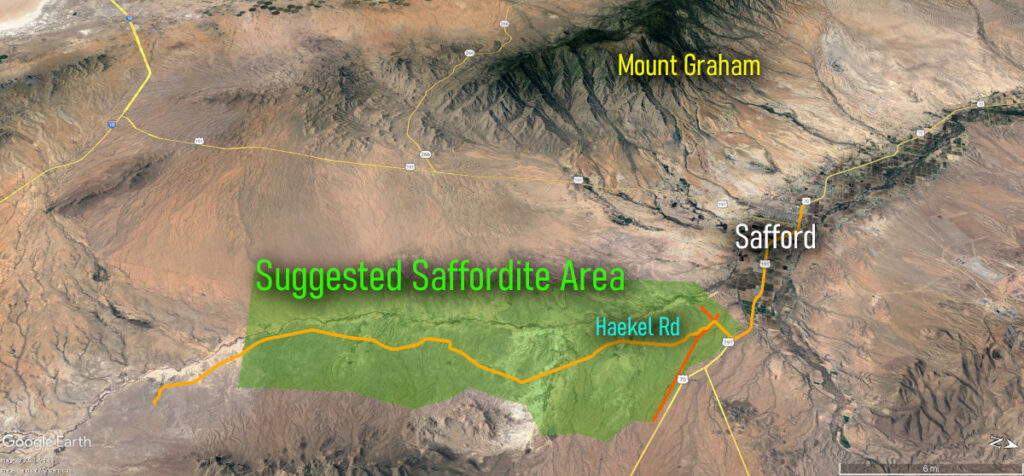
In the morning, walk west away from the road. In the afternoon, walk east! The idea is to follow your shadow because the little black stones “pop” better with the sun over your back.
How to Spot Saffordites
The little black stones range from really small (smaller than a Tic Tac) to larger than a quarter. The small stones weigh less than 1g, while a rare, large stone may weigh 25g or more.
The stones appear as pitch-black, velvet-textured objects that “pop” very visibly against the bland desert background. They are most easily spotted in light-colored areas with little or no vegetation.
First, look for translucent or semi-translucent stones to be sure you have a Saffordite. Hold the stone against a flashlight to check. Some Saffordites are not translucent but you should see some transparency around the edges.
We think the small stones are easier to see on cloudy days. Keep the sun to your back on sunny days and try to go just before sundown.
You may find Saffordites everywhere – we found our largest Saffordites along Haekel Road, less than a mile from U.S. 70! They may hide in a wash, on top of a mesa, or anywhere in between! Expect to find one here, one there, and so on. They are not generally found in clusters!
Do not get discouraged when you cannot find one! It took us 3 hours the first time! Once you spot the first stone, train your eyes on it; from then on, it will be easier.
If you do not see any stones even with a trained eye, go to a different area. Perhaps too many other folks tried the same area as you and all the stones were harvested.


